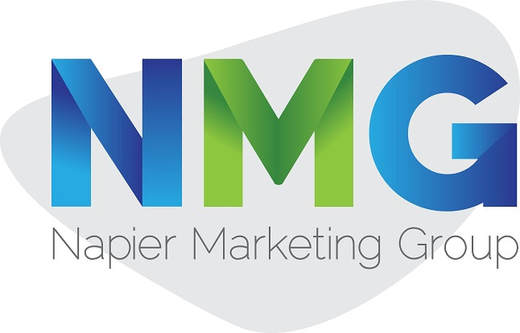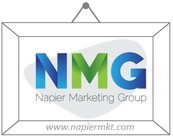How Data Analytics Is Used In Marketing
Data analytics refers to the techniques that exist for processing and analyzing data in order to make it useful. Most businesses today are routinely gathering and generating vast volumes of data on a whole host of different topics. However, simply creating data in and of itself is not going to achieve anything. In order to utilize that data as a predictive tool, it first needs to be properly analyzed.
Why Marketers Should Care
For marketers, the opportunities that data analytics offers are far too great to ignore. Data analytics offers unprecedented insight into audience behavior and perceptions about your brand. Emerson University has an excellent article about the role of data analytics in marketing that sums it up nicely.
|
“Understanding who the customer is, what they are looking for, and their purchasing preferences is front and center in productive and profitable marketing.”
|
Personalization
Personalization is a simple but very effective technique that marketers can use to make their content more engaging to users. Personalization is just what it sounds like, it is a range of techniques that are used to make content more personal. This can be as simple as addressing someone using their real name in a marketing email. Or, it might be something a little bit more complicated, like serving up geo-fenced marketing to users based on their physical location.
Some common examples of personalization in marketing include the following:
Achieving any of these requires access to the right data. However, all of the data required is easily accessible and none of it is so personal that users will feel uneasy about handing it over to you. This is the kind of information that you can either ask customers when they sign up to your newsletter (as in the case of the recipient’s first name) or that you can gather in real-time using a smartphone app (user location data).
Some common examples of personalization in marketing include the following:
- Recommended emails
- Geo-location data and geo-fencing
- Offering special discounts to specific customers
- Sending reminder emails to users that haven’t visited your store in a while
Achieving any of these requires access to the right data. However, all of the data required is easily accessible and none of it is so personal that users will feel uneasy about handing it over to you. This is the kind of information that you can either ask customers when they sign up to your newsletter (as in the case of the recipient’s first name) or that you can gather in real-time using a smartphone app (user location data).
Descriptive, Predictive, and Prescriptive Analyses
There are three forms of data analytics that marketers can engage with. Understanding the difference between these as well as how they work together is at the heart of understanding why data analytics is such a useful set of techniques for marketers.
Let’s start with descriptive analytics. This encompasses techniques such as data visualization and business intelligence. The purpose of descriptive analytics is to analyze data and content in order to establish the current state of something. In other words, descriptive analytics looks at what has already happened.
On the other hand, predictive analytics is concerned with what will happen in the future. Predictive analytics includes techniques like forecasting, predictive modeling, and regression analyses. Making predictions about the future of a market requires knowledge of its current state and trajectory, so predictive and descriptive analytics are closely related.
Finally, prescriptive analytics involves things like simulations and recommendation engines. These are data analytics techniques that are designed to help businesses make decisions about what they should do. With knowledge of the current state of the market and its expected future state, businesses can make decisions about how they adjust their own strategies accordingly.
Let’s start with descriptive analytics. This encompasses techniques such as data visualization and business intelligence. The purpose of descriptive analytics is to analyze data and content in order to establish the current state of something. In other words, descriptive analytics looks at what has already happened.
On the other hand, predictive analytics is concerned with what will happen in the future. Predictive analytics includes techniques like forecasting, predictive modeling, and regression analyses. Making predictions about the future of a market requires knowledge of its current state and trajectory, so predictive and descriptive analytics are closely related.
Finally, prescriptive analytics involves things like simulations and recommendation engines. These are data analytics techniques that are designed to help businesses make decisions about what they should do. With knowledge of the current state of the market and its expected future state, businesses can make decisions about how they adjust their own strategies accordingly.
Predictive Analytics
Some people are absolutely convinced that their smartphones are spying on them in order to serve them up ads that they might be interested in. You have probably experienced the eerie phenomenon of talking to someone about a particular product, only to then find that very product appearing in your personalized ads when browsing the internet. This isn’t actually down to any kind of spying, it is actually an example of the power of predictive analytics.
By harnessing the power of big data, businesses with the right tools and know-how to analyze that data can use it to make startlingly accurate predictions about their users. Utilizing predictive analytics requires businesses to have access to the necessary volume of data, and the right techniques for refining and analyzing it. This makes predictive analytics difficult for smaller businesses, but like all forms of data analytics, it is becoming more available as time goes on.
There are endless use cases for predictive analytics within the field of marketing, it is a very powerful technique:
Data analytics is a vital tool for any marketer working today. By harnessing the potential of data analytics, marketers can supercharge their digital marketing campaigns and gain the kind of insights into their audience that would be impossible otherwise.
By harnessing the power of big data, businesses with the right tools and know-how to analyze that data can use it to make startlingly accurate predictions about their users. Utilizing predictive analytics requires businesses to have access to the necessary volume of data, and the right techniques for refining and analyzing it. This makes predictive analytics difficult for smaller businesses, but like all forms of data analytics, it is becoming more available as time goes on.
There are endless use cases for predictive analytics within the field of marketing, it is a very powerful technique:
- Detailed lead scoring
- Targeted content distribution
- Churn rate prediction
- Optimization of marketing campaigns
- Lead segmentation
Data analytics is a vital tool for any marketer working today. By harnessing the potential of data analytics, marketers can supercharge their digital marketing campaigns and gain the kind of insights into their audience that would be impossible otherwise.



